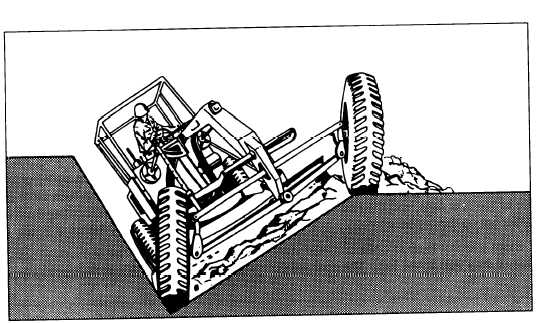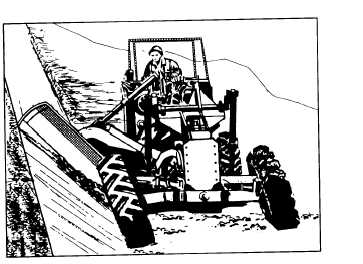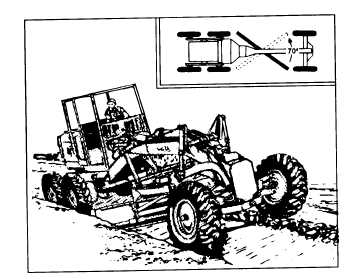Figure 10-15.-Wheel lean on a ditch slope.
the wheels in the direction of the flow of material (the
heel of the blade). For example, as shown in figure
10-14, viewed from the operator’s seat, the toe of the
blade is extended to the right of the grader side casting
the material to the left. The material cut at the toe of the
blade causes a pulling force exerted on the front end of
the grader, wanting to pull the grader to the right. By
leaning the top of the wheels to the left (heel) counteracts
this pulling force.
When grading a ditch foreslope, as shown in figure
10-15, lean the top of the wheels enough to keep them
in a vertical working position. This will lean
technique will do the following: (1) keep the grader from
drifting down the bottom of the foreslope and (2) keep
the grader wheels from climbing the walls of the
backslope.
On high bank-cutting operations, lean the top of the
wheels toward the bank, as shown in figure 10-16. The
blade engaged in the bank cut causes a pushing force,
wanting to push the grader away from the bank. The
wheel lean counteracts the force and helps keep the
blade properly positioned for bank cutting.
Turning Around
When jobs are confined to short stretches or narrow
widths, rotating the blade from forward to reverse
grading position requires a circle reverse movement of
only about 70 degrees (fig. 10-17). When reverse
blading, the cut pass is normally made in reverse, while
the side casting of the windrow pass is made on the
forward trip, saving valuable time and speed in
Figure 10-16.—Wheel lean on high bank-cutting operations.
Figure 10-17.-Changing the blade from forward to reverse.
10-7





